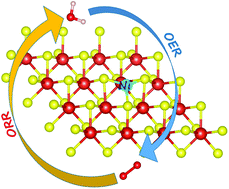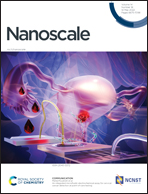Computational screening of single-atom catalysts supported by VS2 monolayers for electrocatalytic oxygen reduction/evolution reactions†
Abstract
The development of highly efficient bifunctional electrocatalysts to boost oxygen reduction reaction (ORR) and oxygen evolution reaction (OER) is highly desirable for energy conversion and storage devices. Herein, by means of comprehensive first-principles computations, we systematically explored the catalytic activities of a series of single transition metal atoms anchored on two-dimensional VS2 monolayers (TM@VS2) for ORR/OER. Our results revealed that Ni@VS2 exhibits low overpotentials for both ORR (0.45 V) and OER (0.31 V), suggesting its great potential as a bifunctional catalyst, which is mainly induced by its moderate interaction with oxygenated intermediates according to the established scaling relationship and volcano plot. Interestingly, the substituted doping of nitrogen heteroatoms into the VS2 substrate can further effectively improve the ORR/OER activity of the active metal atom to achieve more eligible ORR/OER bifunctional catalysts. Our results not only propose a new class of potential bifunctional oxygen catalysts but also offer a feasible strategy for further tuning their catalytic activity.

- This article is part of the themed collections: Nanoscale Horizons, Nanoscale, and ChemComm: Nanocatalysis and Nanoscale 2023 Lunar New Year Collection


 Please wait while we load your content...
Please wait while we load your content...